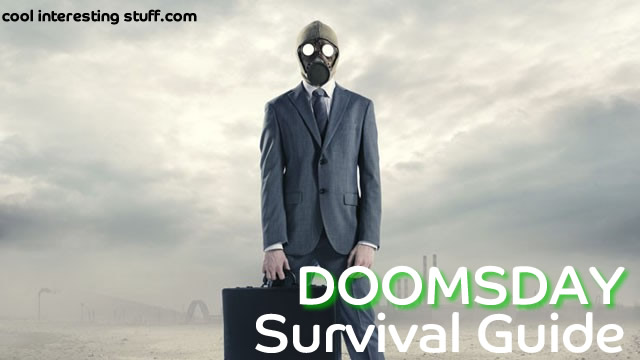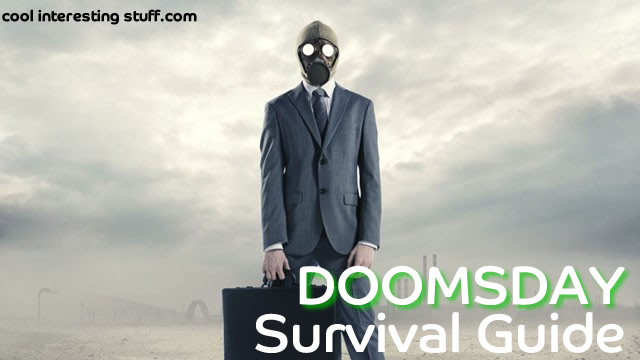 Your Disaster supplies kit should contain essential Food, Water, and supplies for at least three days. Keep this kit in a designated place and have it ready in case you have to leave your home quickly. Make sure all family members know where the kit is kept. Additionally, you may want to consider having supplies for sheltering for up to two weeks. This kit should be in one container, and ready to “grab and go” in case you are evacuated from your workplace. Make sure you have Food and Water in the kit. Also, be sure to have comfortable walking shoes at your workplace in case an evacuation requires walking long distances. In case you are stranded, keep a kit of emergency supplies in your car. This kit should contain Food, Water, first aid supplies, flares, jumper cables, and seasonal supplies.
Your Disaster supplies kit should contain essential Food, Water, and supplies for at least three days. Keep this kit in a designated place and have it ready in case you have to leave your home quickly. Make sure all family members know where the kit is kept. Additionally, you may want to consider having supplies for sheltering for up to two weeks. This kit should be in one container, and ready to “grab and go” in case you are evacuated from your workplace. Make sure you have Food and Water in the kit. Also, be sure to have comfortable walking shoes at your workplace in case an evacuation requires walking long distances. In case you are stranded, keep a kit of emergency supplies in your car. This kit should contain Food, Water, first aid supplies, flares, jumper cables, and seasonal supplies.
Your checklist
Water
How Much Water do I Need?
You should store at least one gallon of Water per person per day. A normally active person needs at least one-half gallon of water daily just for drinking.
Additionally, in determining adequate quantities, take the following into account:
• Individual needs vary, depending on age, physical condition, activity, diet, and
climate.
• Children, nursing mothers, and ill people need more water.
• Very hot temperatures can double the amount of water needed.
• A medical emergency might require additional water.
Food SUPPLIES
The following are things to consider when putting together your food supplies:
• Avoid Foods that will make you thirsty. Choose salt-free crackers, whole grain Cereals, and canned Foods with high liquid content.
• Stock canned Foods, dry mixes, and other staples that do not require refrigeration, cooking, water, or special preparation. You may already have many of these on hand. Note: Be sure to include a Manual can opener.
• Include special dietary needs.
BASIC Disaster Supplies Kit
The following items are recommended for inclusion in your BASIC Disaster supplies kit:
• Three-day supply of non-perishable food.
• Three-day supply of water – one gallon of water per person, per day.
• Portable, battery-powered radio or television and extra Batteries.
• Flashlight and extra Batteries.
• First aid kit and manual.
• Sanitation and hygiene items (moist Towelettes and Toilet paper).
• Matches and waterproof container.
• Whistle.
• Extra clothing.
• Kitchen accessories and cooking utensils, including a can opener.
• Photocopies of credit and identification cards.
• Cash and coins.
• Special needs items, such as prescription medications, eye glasses, Contact lens solutions, and hearing aid Batteries.
• Items for infants, such as formula, diapers, bottles, and pacifiers.
• Other items to meet your unique family needs.
If you live in a cold climate, you must think about warmth. It is possible that you will not have heat. Think about your clothing and bedding supplies. Be sure to include one complete change of clothing and shoes per person, including:
• Jacket or coat.
• Long pants.
• Long sleeve shirt.
• Sturdy shoes.
• Hat, mittens, and scarf.
• Sleeping bag or warm blanket (per person).
Be sure to account for growing children and other family changes. You may want to add some of the items listed to your basic Disaster supplies kit depending on the specific needs of your family.
First Aid Supplies:
adhesive bandages, various sizes
5” x 9” sterile dressing
Conforming roller gauze bandage
Triangular bandages
3” x 3” sterile gauze pads
4” x 4” sterile gauze pads
Roll 3” cohesive bandage
Germicidal hand wipes or waterless, alcohol-based hand sanitizer
Antiseptic wipes
Pairs large, medical grade, non-latex gloves
Tongue depressor blades
Adhesive tape, 2” width
Antibacterial ointment
Cold pack
Scissors (small, personal)
Tweezers
Assorted sizes of safety pins
Cotton balls
Thermometer
Tube of petroleum jelly or other lubricant
Sunscreen
CPR breathing barrier, such as a face shield
First Aid Manual
Non-Prescription and Prescription Medicine Kit Supplies:
Aspirin and non-Aspirin pain reliever
Anti-diarrhea medication
Antacid (for stomach upset)
Laxative
Vitamins
Prescriptions
Extra eyeglasses/contact lenses
Sanitation and Hygiene Supplies:
Washcloth and towel
Heavy-duty plastic garbage bags and ties for personal sanitation uses and Toilet paper
Towelettes, Soap, hand sanitizer
Medium-sized plastic bucket with tight lid
Tooth paste, toothbrushes
Disinfectant and household chlorine bleach
Shampoo, Comb, and brush
A small shovel for digging a latrine
Deodorants, Sunscreen
Toilet paper
Razor, shaving cream
Lip balm, insect repellent
Contact lens solutions
Mirror
Feminine supplies
Equipment and Tools:
Portable, battery-powered radio or television and extra Batteries
Manual can opener
NOAA Weather radio, if appropriate for your area
Mess Kits or paper cups, plates, and plastic utensils
Flashlight and extra Batteries
All-purpose knife
Signal flare
Household liquid bleach to treat drinking Water
Matches in a waterproof container (or waterproof Matches)
Sugar, salt, pepper
Shut-off wrench, pliers, shovel, and other Tools
Aluminum foil and Plastic wrap
Duct tape and Scissors
Re-sealable plastic bags
Plastic sheeting
Small cooking stove and a can of cooking fuel (if Food must be cooked)
Whistle
Small canister, ABC-type fire extinguisher
Comfort Items
Tube tent
Games
Compass
Cards
Work gloves
Books
Paper, pens, and pencils
Toys for kids
Needles and Thread
Foods
Battery-operated travel alarm clock
Originally posted 2016-04-18 00:28:20. Republished by Blog Post Promoter














